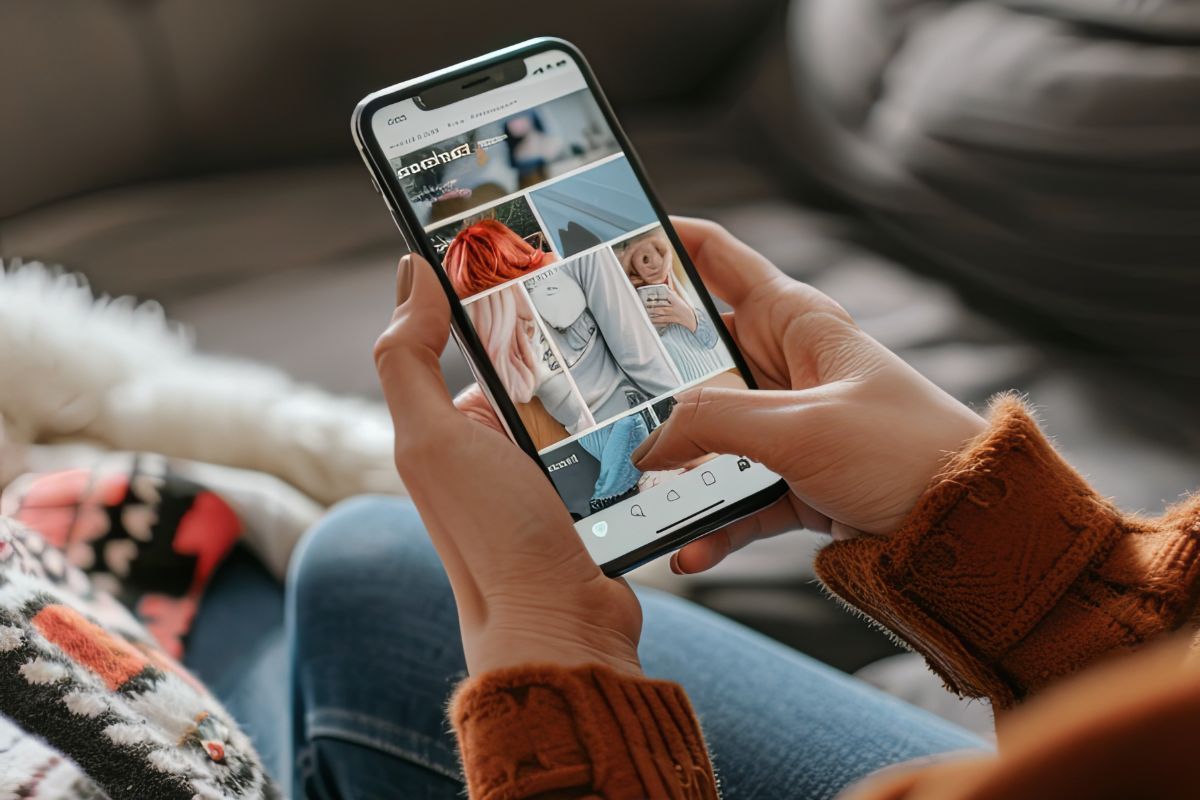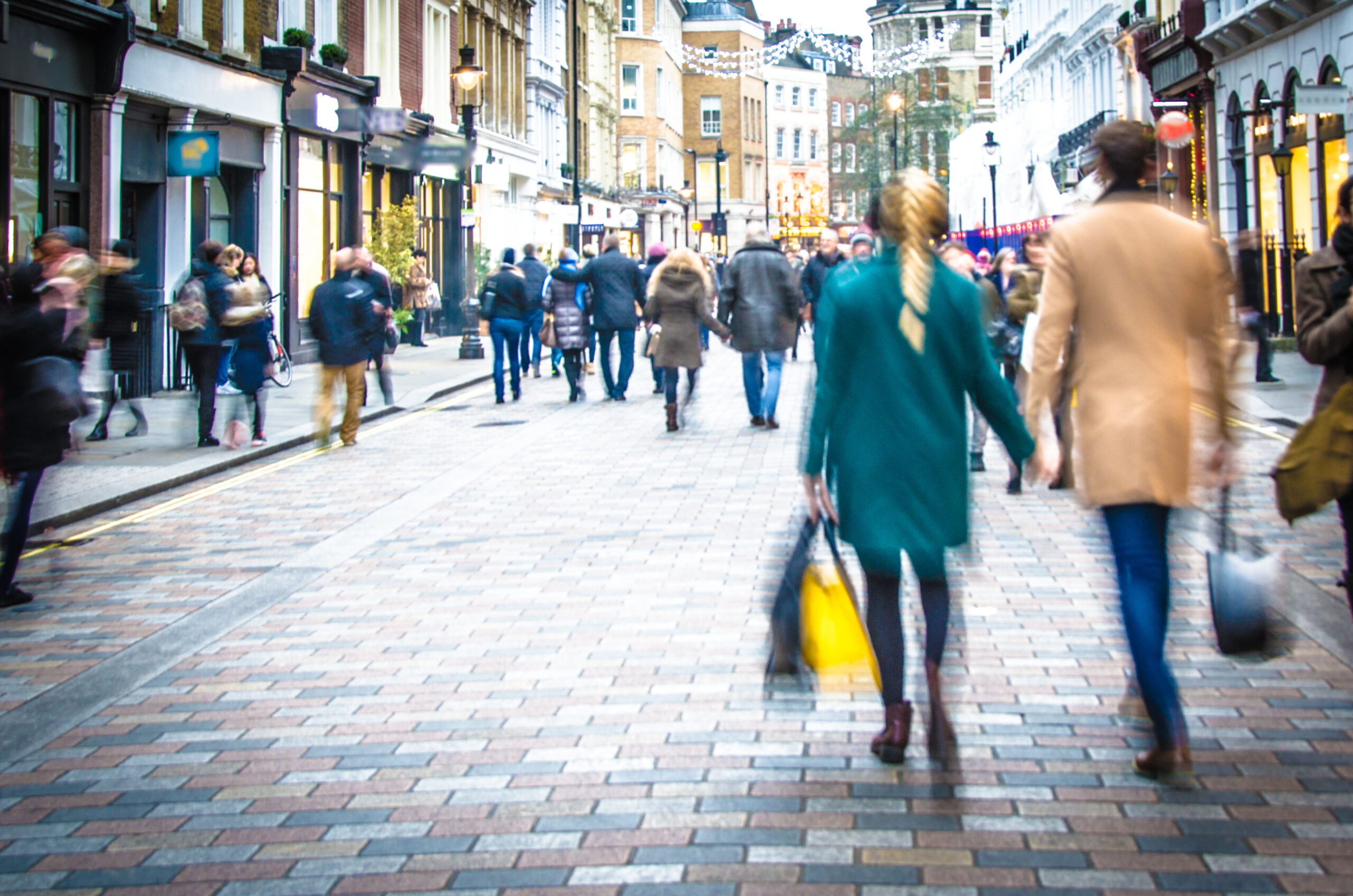How has shopping changed, two weeks into the coronavirus pandemic? RetailX has tested opinion for the second time through the RetailX Coronavirus Consumer Confidence Tracker and is starting to find real changes in the way that people now buy.
The biggest changes reflect the Government advice for non-essential retail shops to close: fewer people are now going to shops. Those that are should now be buying groceries in a more regulated way, queuing outside stores and leaving plenty of space within them. Some 87% of respondents say they have either stopped going to shops altogether (27%) or are buying less from shops (60%).
RetailX research finds that shoppers are now doing more of their shopping online, with some doing so for the first time. But shoppers are having difficulty buying online, especially when it comes to groceries and takeaways. And groceries is the only area where more people say they have increased their online purchases, in comparison with those who have reduced or stopped.
Electronics retailer Dixons Carphone has said shoppers are buying more technology as they spend more time living, working and being entertained at home. RetailX findings suggest that the number who are spending more in this area is lower than those who are spending less or have stopped spending altogether. However, the largest group of people is spending as much as previously.
Meanwhile, a small number of clothing retailers, including Next, River Island and TK Maxx, have started to shut their online operations, in response to staff safety. RetailX findings suggest that while many are shopping online in this area at the same level as previously, fewer people are increasing their spending this category, compared to those that have reduced or stopped spending. The full results are below, while the charts are here.
This is the second instalment in RetailX fortnightly research into attitudes to Covid-19 and changing shopping behaviours. The study was carried out online, via Pollfish, over the course of March 25 2020, and includes 1,000 responses from UK adults. Percentages are rounded to the nearest full number. Respondents were evenly split between female (49.9%), and male (50.1%).
RetailX founder Ian Jindal said: “Since we first launched the RetailX Coronavirus Consumer Confidence Tracker, the way we shop has changed enormously. Today’s results come at a time when many shops are now on a shutdown, and a small number of businesses selling non-essential items such as clothing have also temporarily closed their online channels.
“This was perhaps unimaginable for many of our respondents two weeks ago – as we see from our study of two weeks ago. We’ll be interested to see how attitudes change in our next installment, in two weeks time.”
Attitudes to Covid-19
Expectations of how long the Covid-19 pandemic would last have changed in recent weeks.
Now
This week, more than half (53%) of survey respondents said it would last for between four and 12 months, and 27% said it would last between one and three months, while 12.7% are expecting it to continue for between one and two years. At the extremes, 2.8% said it will never return to normal, and 0.9% say there is no public health issue.
Two weeks ago
Shoppers mostly thought the Covid-19 public health issue would last for several months. More than three quarters (79%) said it would last for between one and 12 months, with 35% expecting it to be one to three months, and 44% expecting between four and 12 months, while 9% said it would be between one and two years. At the extremes, 3% said there was no public health issue, 5% said it will last less than a month and 3.5% said it will never return to normal.
How do shoppers buy – and how is their behaviour changing?
The RetailX study asked how the Covid-19 had affected respondents’ in-store shopping behaviour, and found that more had now stopped going into stores to buy. But that did not necessary mean buying more online.
How are we using shops?
Now
More than a quarter (27%) say they have stopped shopping in bricks and mortar stores, while 60% say they have reduced the amount they shop in store. Some (9%) still do the same amount of shopping in-store, while just under 2% (1.8%) are doing more.
Two weeks ago
More than two-thirds (71%) said they had not changed the extent to which they bought in physical stores, 21% said they had reduced their in-store shopping, 4.6% had increased in-store purchasing, and 3% had stopped buying in shops altogether.
How are we shopping online?
The latest figures show more people are now shopping online, with the number who do not shop online falling to 2.4% from 4% two weeks ago.
Now
More than a quarter (27%) of people shop online between 16 and 30 times a year, followed by those who shop between six and 15 times (24%), those who shop between 31 and 60 times a year (16.3%), and those who shop more than 60 times a year (14%). Respondents were asked if they shop online more than 60 times a year for the first time in this week’s research.
Just under half (43%) say they are shopping online for groceries to the same extent as usual, 26% are buying more and 15% have reduced their online grocery shopping, and 15.5% have stopped buying groceries online.
Almost half (47%) are shopping online for electronics to the same degree as normal. More than a quarter (29%) have stopped completely, 16% have reduced, and 7.5% have increased their electronics shopping.
Forty-five per cent are buying clothes online as much as previously, 28% have stopped altogether, 17% have reduced their spending, and 10% have increased it.
When it comes to takeaway food, 34% are ordering deliveries as normal, 35% have stopped them, 18% have reduced them and 12% have increased their orders.
In this week’s study, RetailX asked for the first time how higher levels of activity as a result of Covid-19 had affected shoppers’ ability to buy online.
The biggest change was in groceries, where 41% said they were less able to buy online because websites were busy, 19% said their ability to shop was unaffected, 10% said they were more able to shop online, and 30% said they didn’t buy groceries online.
A third (32%) said they were less able to buy takeaways online, 6% said they were more able, 28% said they had seen no issues, and 33% didn’t order online anyhow.
The ability to buy clothing seems less affected with 40% saying they are as able to buy as previously, 25% finding they are less able to buy because of busyness or other Covid-19 issues, 7% were able to buy more, and 28% didn’t ever buy clothes online.
When it comes to buying electronics, 35% did not ever shop online, 35% saw their ability to buy was not affected, 23% said Covid-19-related busyness had effected their ability to buy, and 6% said they were more able to buy.
Two weeks ago
Two weeks ago the largest group said they bought online more than 30 times a year (34%), followed closely by those who bought online between 16 and 30 times a year (24%), and those who bought six to 15 times a year (22%). A further 16% bought online between one and five times a year.
More than three-quarters (78%) said they were shopping online for groceries to the same extent as previously following the outbreak, 14% were doing more of their grocery shopping online, 3.8% were shopping less, and 4% had stopped completely.
Some 86% were buying electronics equipment online to the same extent, while 7% were buying more, 5% less, and 3% had stopped altogether.
Most (83%) continued to buy clothes online at the same level as previously, while 10% are buying more, 5% buying less and 3% have stopped.
Just under three-quarters (73%) were buying takeaway food to the same extent, 7% are buying more, 11% less and 7.5% have stopped.
How are work and social behaviours changing as a result of Covid-19?
Now
More than half (53%) have stopped going out to work, while 29% have made no change in the extent to which they go out to work, and 15% have reduced the amount. A small number (2%) say they are now going to work more.
Eighty per cent of people are no longer meeting their friends in person, while 13% have reduced the amount they see them, and 7% have made no change. Very small numbers (0.3%) said they were seeing their friends more often.
Eighty-five per cent have completed stopped going out to eat at restaurants, while just over 7% (7.2%) have reduced, and just under 7% (6.8%) have not changed the amount they eat out. Just under one per cent (0.9%) said they were eating out more.
Eighty-two per cent said they had stopped going out for leisure to venues such as a football match, cinema or theatre, while 9% had reduced the extent to which they did this, and 9% had made no change. Less than half a per cent (0.49%) said they were doing more of this.
And 79% said they had stopped going to work-related events with more than 50 people, while 13% had made no change, and 7% had reduced this. One per cent said they were doing this more.
Two weeks ago
Eighty-three percent of respondents said they were going out to work to the same extent, while 3.7% were spending more time at work, 8.1% were spending less, and 4.3% had stopped going out to work. But while 62% were attending work events with more than 50 attendees, only 3% were doing that more often, and 20% had reduced the number of events they attended. Fourteen per cent had stopped altogether.
Three-quarters (76%) had made no change to how often they meet friends, 3.5% were meeting them more, 17.5% were doing so less often and 3% had stopped.
Six in 10 (61%) were going out for leisure activities such as football matches, cinema and theatre to the same extent. Four per cent were doing more of this, while 23% were doing less and 11% had stopped altogether.
Almost two-thirds were eating out at restaurants to the same extent as previously, while 3% were doing so more often, 20% less often and 10% had stopped altogether.
Looking to the future
Now
Asked how they would shop when the Covid-19 health issue is over, 68% said they would go back to shopping the way they had previously, 24% said they were carry on being as they are now, and 8% said they had not changed the way they shop.
Two weeks ago
Asked how they will shop when the outbreak is over, 59% said they had not changed the way they shop, 26% said they would shop as they did previously, and 14% said they would shop as they were now.
Here are the graphics in full.
Look back: here’s our first instalment of this research.
Main image: Adobe Stock
Graphics: RetailX. See all the graphics and find out how to reuse and cite them here








